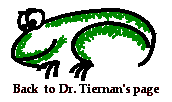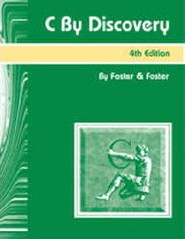Miscellaneous Coding Tidbits
To get input from data files:
Include stdio.h as a header file, declare a FILE * variable, use fopen to connect the FILE * variable to your physical file. See references further below for C file I/O examples.
To deal with reading strings correctly from files:
When reading a string after reading a number from a file, you may need to read a junk character out between reading the number and the string. Use the getc(file_pointer) command to read one character from a file. If one doesn't work try using two getc commands.
To compile multiple physical files into a single program:
To compile two files (Ex: L41.c and L42.c) together into a single
program, use the gcc command with both file names following. Example:
myomega>gcc L41.c L42.c
To get time and date information for your program using C functions:
Information and an example using localtime(), time(), and the struct tm are available at
www.cplusplus.com/ref/ctime/localtime.html
Click on the various links to see the struct definition and other examples
 Coding and Other Tips for Lab Assignments in CSE1320
Coding and Other Tips for Lab Assignments in CSE1320
Links to information about C file I/O:
Reference from Boston University CS class
C File I/O
Use section "2. C FIle I/O". Ignore section "1. Redirection".
Reference from University of Essex
File I/O, fopen and fclose
Clearly written with examples
Links to information about using 'getline' instead of 'gets':
GNU C Manual - Line-Oriented Input
GNU C Programming Tutorial - getline
 CSE1320 Powerpoint presentations
CSE1320 Powerpoint presentations

Software Engineering Slide Presentation
The above link is for a Powerpoint presentation on Software Engineering that will be presented at the beginning of the semester.
 Beginner's guide to writing a C function
Beginner's guide to writing a C function
Intro to omega
Covers how to connect to omega, a few Unix commands, a short list of editors and compilers and an example of using the GDB debugger which is available for gcc.
A Powerpoint presentation by Do Kim (CSE senior) edited by Dr. T.
Posted 31 August 2004
This has hints about control structures, variable types, arrays, structs, pointers, linked lists, recursion and DEBUGGING!
Sticky Bits in C online presentation
Sticky Bits in C to download
A Powerpoint presentation by Dr. T.
Posted 19 April 2004

Example Quiz
2nd Example Quiz with solutions
Sample Test Questions with Comments
Below is a link to the review sheets and tests that were given for previous C classes. Similar reviews will be posted for this semester.
Tests, test reviews, and old lab assignments for previous C 1320 classes taught by Dr. Tiernan
Example Ethics Policy

These links go to various resources for Unix, the vi editor, and the emacs editor. There is also a link to the main OIT web page for questions about UTA's systems.
 "how-to" Unix reference manual from UTA OIT
"how-to" Unix reference manual from UTA OIT
- be sure to scroll down to the bottom of the OIT page if no Unix guide
info is visible to the right of the menu bar
vi Unix editor reference from UTA OIT
- be sure to scroll down to the bottom of the OIT page if no vi editor
info is visible to the right of the menu bar
vi
Unix editor reference: University of Washington
vi
Unix editor tutorial: University of Hawaii
emacs
Unix editor reference manuals: GNU organization
pico Unix editor reference from the University of Michigan
pico Unix editor reference from the University of Chicago
OIT - Office of Information Technology website which has other helpful links
Copyright Tyger Design, Inc. Web page created by Tyger Design.  Final Exam for CSE 1320 will be Tuesday, May 11th at 2pm in class.
Final Exam for CSE 1320 will be Tuesday, May 11th at 2pm in class.
 Lab #4 Assignment for Spring 2010 as web page
Lab #4 Assignment for Spring 2010 as web page 
 If you have trouble reading something on this website or
If you have trouble reading something on this website or Reference material for Lab Assignments
Reference material for Lab Assignments


